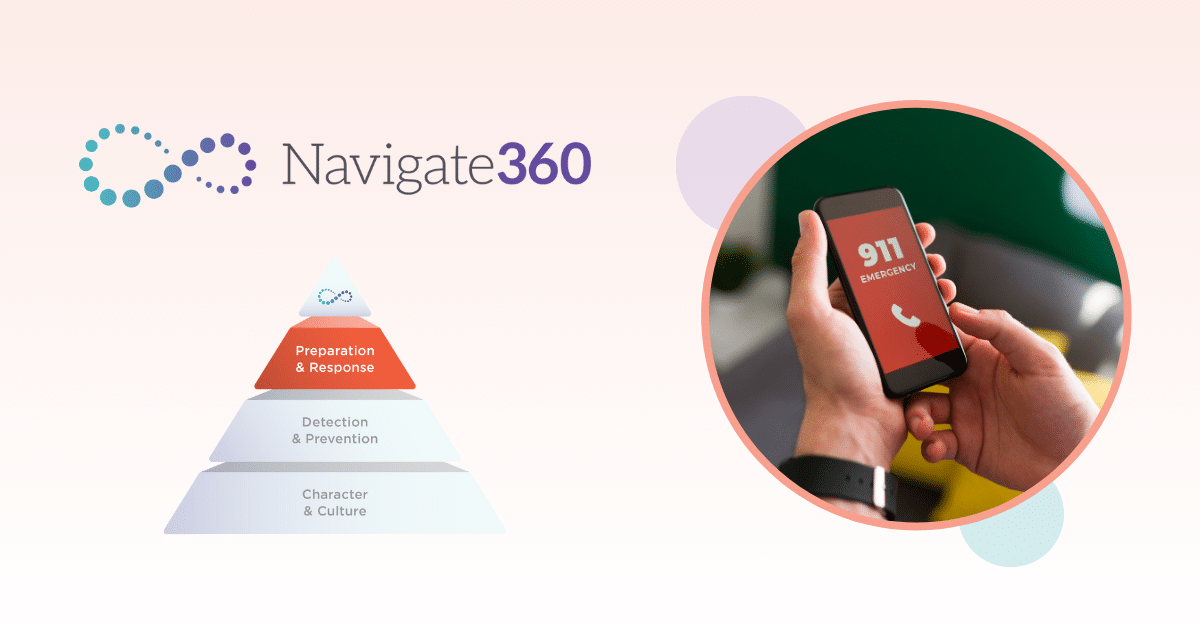Have a Plan in Place to Care for Students Before, During, and After Every Safety Drill in School
School safety drills are key to increasing your school community’s knowledge of how to respond to an emergency or violence. They help prepare individuals to respond quickly, calmly, confidently, and safely should an actual critical incident take place.
That being said, if your students have been involved in a traumatic event, it’s important to provide trauma-informed support as they process the experience. Suffering a trauma such as a school shooting changes the body and brain on a cellular level. Thoughts, feelings, and behaviors may look different than before the event, and while this is normal, it can be overwhelming to support students through it.
Many people often link significant trauma responses to specific events or the magnitude of a tragedy. However, the extent of trauma responses largely depends on how individuals cope with the aftermath of an event. If someone who undergoes a traumatic event can utilize available resources and receive support to restore their sense of safety and regain a measure of stability and control in their lives, they are less likely to undergo a severe traumatic response.
Emergency Drills Shouldn’t Re-Traumatize Students
Re-establishing a sense of safety at school is the number one priority, and part of ensuring that safety is practicing drills to respond to emergencies. Unfortunately, this can bring up a lot of intense thoughts, feelings, and sensations related to students’ trauma.
Students will understand on a cognitive level that a drill is just a drill, but their bodies and the parts of their brains that have stored the trauma do not know that. When participating in a drill, students will be exposed to certain sensory stimuli that can bring them right back to the traumatic event and make it seem like it’s happening again. Knowing this, preparing for it, and caring for them through the process is important so they don’t experience re-traumatization.
Trauma-Informed Steps to Protect Students’ Emotional Wellbeing During Drills
Safety drills in schools are key to increasing students’ knowledge of how to respond to an emergency or violence. They help prepare them to respond quickly, calmly, confidently, and safely in the face of a critical event. You can utilize the following suggestions to support students’ mental and emotional well-being before, during, and after school safety drills.
NOTE: These ideas are suggestions. Use your discretion and choose options that you feel best support your students. Always consider the individual needs of your students and what is developmentally appropriate for them.
How to Support Students Before a School Safety Drill
- Talk to students about the drill. As a class, discuss what to expect during the drill (will there be an announcement, will there be a fire alarm, will there be law enforcement present?), what types of behaviors are expected of participants (no talking, staying calm, being where they should be) and answer any questions they have.
- Talk to students about how their mind and body might respond during the drill. Explain that drills can bring up unexpected and difficult thoughts, feelings, and sensations. While this is normal, it can feel very distressing.
- Talk to students about how their minds and bodies might respond after the drill. Explain that they might feel very tired or have difficulty sleeping that night. They might feel irritable, angry, or sad. They might also feel a sense of numbness. They might have a hard time focusing in the hours and days after the drill, and they might feel on edge or get startled easily.
- Talk about coping strategies participants can use during the drill. Consider having a list posted in the classroom.
- Take note of any students who seem especially distressed during conversations before the drill, and make sure that those students have access to extra support (such as an additional, preferably familiar, staff member or a buddy that they can be paired with).
How to Support Students During a School Safety Drill
- Try to manage your own emotions and responses. If students see that you’re distressed, it is going to increase their level of distress. Remain calm and think of having a “low and slow manner” – use a lower voice (avoid shouting), keep language simple and direct (try not to use a lot of words) and communicate and move slowly (avoid any sudden outbursts or quick movements).
- Keep track of students who appear to be getting overwhelmed or significantly distressed. Remind them of coping strategies and offer reassurance and validation (you’re safe, this will be over soon, I know this is hard, everything is going to be okay). See if there is another student who is feeling more regulated and pair them up to help.
- Have regulation tools at the ready to hand out if needed. Some examples are:
- Fidget tools (spinners, stress balls, etc.)
- Hard candy, mints, or gum
- Positive Affirmation cards (these could be prepared ahead of time as a class)
- Noise-cancelling headphones for students who are particularly impacted by loud noise
- Mini container of play dough or putty (if possible, use scented play dough or putty)
How to Support Students After a School Safety Drill
- Ensure that any students experiencing significant levels of emotional distress are tended to by a counselor, social worker, or other qualified staff member. These students should be taken to another location, if possible, to avoid upsetting others.
- Have stations prepared ahead of time that offer quiet and calming activities. There could be a listening station (with music or audiobooks), a coloring or writing station, a quiet game station (card games, word games, Sudoku, brain teasers, etc.), or any other quiet activities that your class enjoys.
- If you have been reading a book aloud to your class, read a couple of chapters. If your class enjoys picture books being read aloud, choose a couple of good ones ahead of time.
- If your students seem ready and able, debrief with them as a class. Use your discretion. You know your students best. Only debrief with them if you feel it’s appropriate or helpful to do so. If you choose to debrief, ensure a safe space is established for them to share openly by discussing expectations:
- One person talks at a time (consider using a talking piece to signal whose turn it is to speak)
- When someone is talking, everyone is listening
- Respond to each other with kindness
- Use “I” statements
- What is said in the group stays in the group
Use any of the following prompts to spark discussion:
- What two words describe how you’re feeling right now?
- What do you think went well for our class?
- What could we work on for next time?
- Did anything unexpected happen to you during the drill?
- What’s one kind thing you can do for yourself this afternoon?
5. Continue to monitor signs of distress in students in the days following a drill. Sometimes, students may not immediately demonstrate an emotional reaction; they may struggle later. Things to watch for include:
- Irritability
- Changes in affect
- Fearfulness or getting startled easily
- Verbal outbursts
- Withdrawal/shutting down
- Changes in behavior such as restlessness, hyperactivity, lethargy, sleepiness, aggression, or crying
Whole-child Safety Takes a Whole Community

True mental and emotional wellness after trauma is complicated, but you and your students are not alone. As a trusted school safety partner, we know that it takes a community of support to care for students’ physical, mental, and emotional well-being.
With an ecosystem of holistic safety and wellness in place, K-12 schools are in a better position to promote the long-term success of students and teachers. Contact us today to learn more about the steps you can take to support the mental and physical well-being of your students.
The Ultimate Guide to Whole-Child Safety, Wellness & Success in in K-12 Schools
Students can’t reach their full academic potential unless they feel safe and supported at school. Navigate360’s school safety solutions provide you with accessible, integrated tools necessary to save and enhance lives.
Download our guide to learn how Navigate360’s full spectrum of school safety solutions, including mental health and wellness, threat detection and prevention, and safety management and preparedness, work together to foster a safe and positive school culture.
Use this guide to learn how to detect, manage and prevent threats to your school’s safety. Navigate360’s school safety and wellness solutions enable you to support mental health and character development of students and staff alike.




